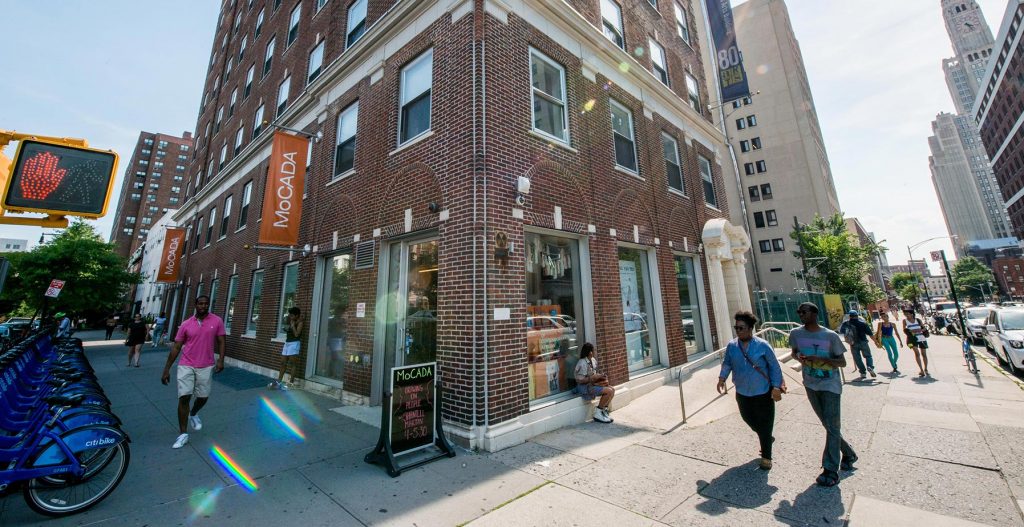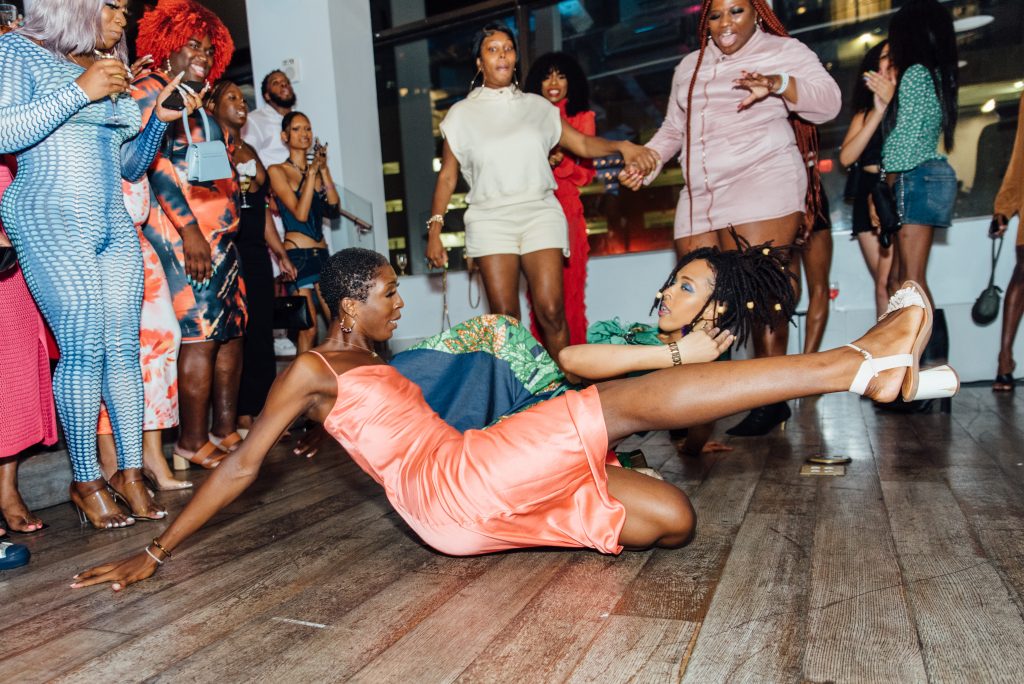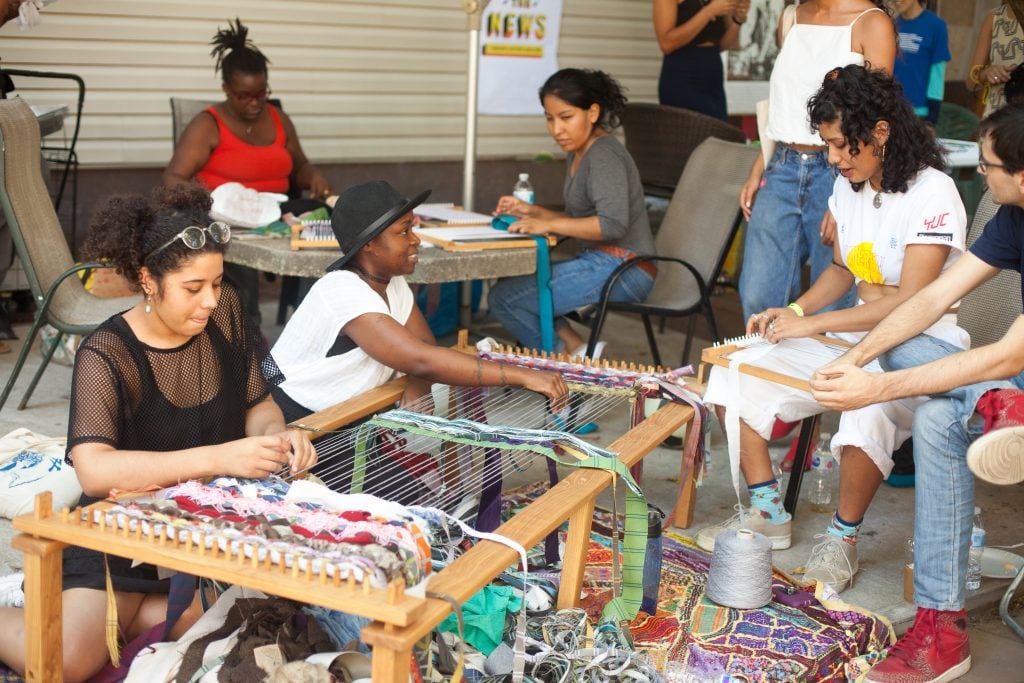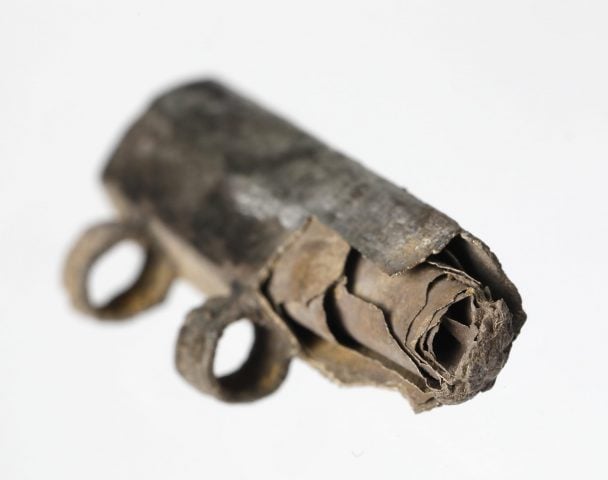Today, among the many envelopes in New York City Mayor Eric Adams’s mailbox was one particularly notable letter: a request for $100 million in funding for cultural groups run by or for Black, Latinx, Indigenous, Asian, Pacific Islander, Middle Eastern, and other people of color (POC).
The missive was sent by the small nonprofit Hue Arts NYC, and accompanies the organization’s first “Brown Paper” report about the state of POC arts groups in the city’s cultural ecosystem, also released today. Both documents paint a sobering picture for such outfits, which are often vital to their communities yet under-funded by the city.
Just 35 percent of the 41 entities surveyed for the report have an annual operating budget over $1 million. While that figure might speak to the relatively modest scope of Hue’s data set, it also reveals something about the intractable challenges of being a POC-led arts group in New York today. It’s not as if more money isn’t a goal for these organizations; more often than not, they say, it’s a question of resources and visibility. Seventy-three percent of reportees said that they lacked the staff to apply for grants and cultivate individual donor relationships.
Partly as a corrective to this low visibility, Hue has produced an accompanying interactive map and directory of some 400-plus POC arts and culture entities in New York. (Hue prefers the word “entities” over “organizations,” as it accounts for both nonprofits as well as cultural outfits that are for-profit, fiscally sponsored, and unincorporated.) Among those dotting the map are the Museum of Contemporary African Diasporan Art in Brooklyn, El Museo del Barrio in Manhattan, and the Bangladesh Institute of Performing Arts in Queens.

The Museum of Contemporary African Diasporan Art in Brooklyn. Courtesy of MoCADA.
Hue Arts NYC was founded in early 2020 by members of Museum Hue, the Laundromat Project, and Hester Street. Their conversations began the year prior and were inspired, in part, by the near-closing of the Weeksville Heritage Center, a community meeting spot and historic site in Brooklyn dedicated to one of the country’s first free black communities. The center, it turned out, had been operating in the red for years and, come 2019, was in desperate need of money to stay afloat.
“I was shocked,” recalled Stephanie Johnson-Cunningham, one of the co-founders of Hue Arts NYC, who grew up visiting the center and later interned there during graduate school. “I really felt helpless,” she said, noting her disbelief “that the city wouldn’t make sure that the site stood its ground.”
Fortunately, Weeksville survived, thanks to a hugely successful crowdfunding campaign. But “Weeksville’s story speaks to pretty much all of the organizations listed in Hue Arts NYC,” Johnson-Cunningham went on. “You would think the city would recognize how much these organizations have done with so little and would support them so they could do even more for their communities. But instead, philanthropists and policymakers have decided that these groups don’t deserve more because they don’t have enough to begin with.”

Performers dancing at the 2021 launch of The List by Black Trans Femmes in the Arts. Courtesy of Black Trans Femmes in the Arts. Photo: Chester Canasa.
Johnson-Cunningham knows that a single letter to the mayor, even one backed by data, is unlikely to yield the requests therein. For her, there’s not the point.
“It’s really important to emphasize that we’re not just asking you for this money,” she explains. “We’re letting you know that the arts bring so much value to this city, economically and otherwise. Here’s the information that shows it.”
Read Hue Arts NYC’s entire Brown Paper report here.








